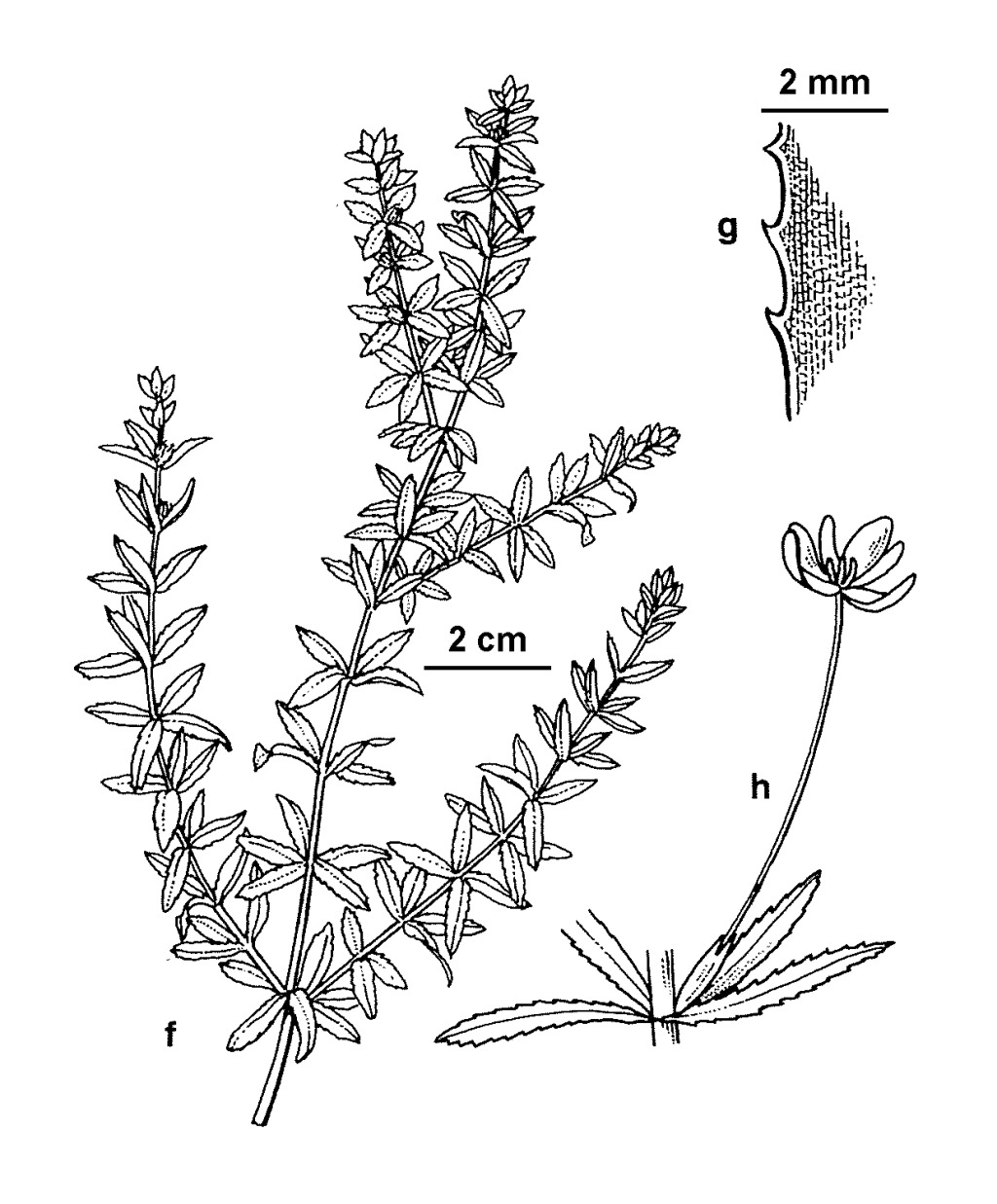Hydrilla
Submerged freshwater, dioecious herb, attached to substrate. Leaves (3–)4–6(–8) per whorl, mostly well-spaced along the branch, sessile, 0.6–4 cm long, narrowly elliptic or narrowly ovate to linear, glabrous, green, often with red-brown markings, 1-veined; margin coarsely toothed with fine translucent teeth; apex obtuse to rounded with midvein extended into a fine tooth. Flowers basally subtended by united floral bracts, solitary or rarely in pairs; perianth of 2 whorls of 3 segments each, translucent. Male flower ± sessile, released as a globular, mature unopened bud and opening as a free-floating flower on the water surface; stamens 3. Female flower with long, slender hypanthium 1.5–10 cm long; staminodes absent; ovary enclosed in base of hypanthium, unilocular; style as long as hypanthium; stigmas 3, thread-like and entire. Seeds 2–3 mm long.
1 species from Europe, Africa, Asia and Australia.
Conn, B.J. (1994). Hydrocharitaceae. In: Walsh, N.G.; Entwisle, T.J., Flora of Victoria Vol. 2, Ferns and Allied Plants, Conifers and Monocotyledons, pp. 129–136. Inkata Press, Melbourne.
 Spinning
Spinning



